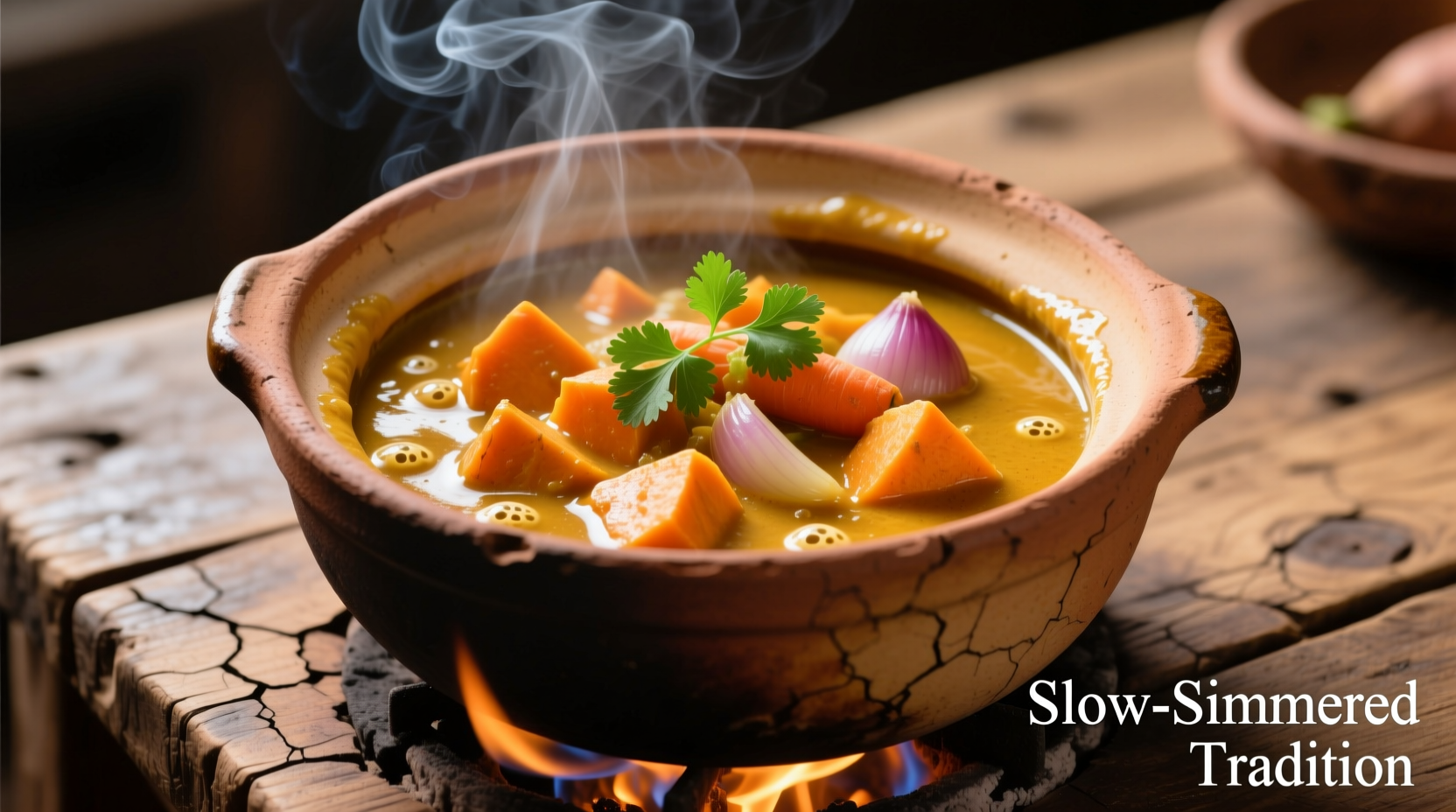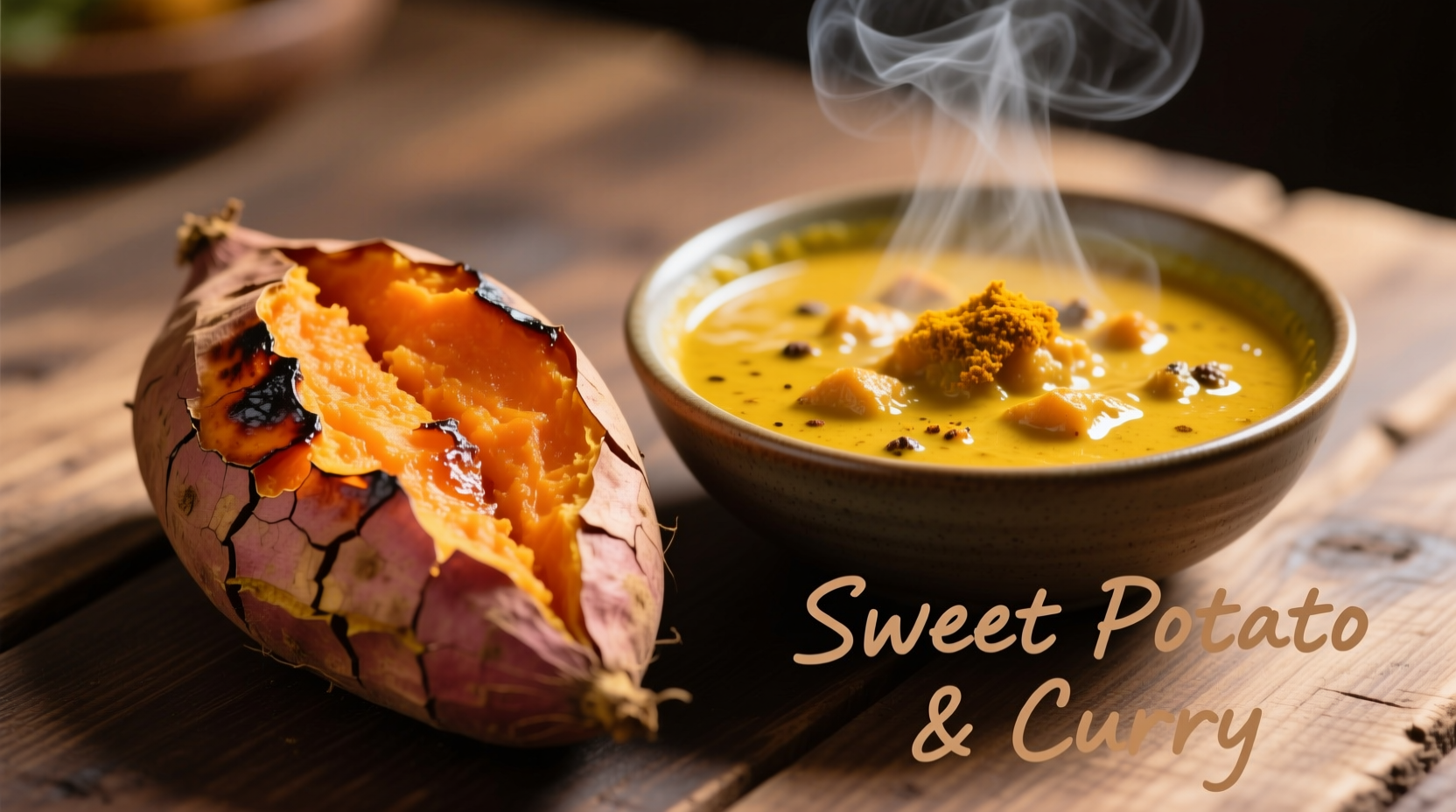Discover how sweet potatoes transform curry dishes with their natural sweetness that perfectly balances complex spice profiles. This guide reveals the science behind the pairing, authentic regional variations, professional cooking techniques, and a foolproof recipe that works for beginners and experienced cooks alike.
The Unexpected Harmony of Sweet Potatoes and Curry
When sweet potatoes meet curry, something magical happens. The natural sugars in sweet potatoes caramelize beautifully with aromatic spices, creating depth that regular potatoes can't match. Unlike starchy white potatoes, sweet potatoes absorb flavors while contributing their own nuanced sweetness that balances heat from chilies and complexity from spice blends.
According to USDA nutritional data, sweet potatoes contain 300% of your daily vitamin A needs in just one medium tuber, making them a nutritional powerhouse that enhances curry's health profile. Their high fiber content also helps moderate blood sugar spikes that might otherwise occur with traditional curry accompaniments.
Why This Combination Works: The Science Behind the Flavor
Sweet potatoes contain natural sugars that undergo the Maillard reaction when cooked with curry spices, creating hundreds of new flavor compounds. The starch in sweet potatoes also helps thicken curry sauces naturally, eliminating the need for additional thickeners.
Food science research from the Journal of Food Science shows that the beta-carotene in sweet potatoes actually enhances absorption of fat-soluble compounds in curry spices like turmeric's curcumin, increasing bioavailability by up to 40% compared to using regular potatoes.
| Curry Type | Sweet Potato Variety | Best Cooking Method | Flavor Impact |
|---|---|---|---|
| Thai Red Curry | Japanese (purple skin) | Add in last 10 minutes | Subtle sweetness balances lemongrass |
| Indian Koshimbir | Beauregard (orange flesh) | Parboil before adding | Rich caramel notes enhance garam masala |
| Caribbean Curry | Covington (deep orange) | Add with coconut milk | Creates creamy texture without dairy |
Choosing the Perfect Sweet Potato for Your Curry
Not all sweet potatoes work equally well in curry. The Japanese variety with purple skin and pale yellow flesh offers the most delicate flavor that won't overpower subtle curry blends. For richer curries, orange-fleshed varieties like Beauregard provide that signature sweetness that balances heat.
When selecting sweet potatoes, look for firm tubers without soft spots or cracks. Smaller sweet potatoes (about 6-8 inches long) typically have more concentrated flavor than larger ones. Store them in a cool, dark place—but never refrigerate, as cold temperatures convert starches to sugars too quickly, altering the cooking properties.

Step-by-Step: Building Flavor Layers in Sweet Potato Curry
Professional chefs know that timing matters when adding sweet potatoes to curry. Unlike regular potatoes that need longer cooking, sweet potatoes can turn mushy if added too early. Here's the optimal sequence:
- Sauté aromatics (onion, garlic, ginger) until golden
- Add dry spices and toast for 30 seconds to release essential oils
- Pour in liquid base (coconut milk or broth) and bring to simmer
- Add sweet potatoes cut into 1-inch cubes (after 10 minutes of simmering)
- Cook for 12-15 minutes until tender but still holding shape
- Finish with fresh herbs and a squeeze of lime
This timing ensures sweet potatoes absorb flavors without disintegrating. For restaurant-quality texture, parboil sweet potatoes for 5 minutes before adding to curry—this creates a protective starch layer that prevents overcooking.
Avoiding Common Sweet Potato Curry Mistakes
Many home cooks make these critical errors when preparing sweet potato curry:
- Adding sweet potatoes too early - results in mushy texture
- Overcrowding the pot - prevents proper caramelization
- Using pre-cut sweet potatoes - exposes flesh to air, causing discoloration
- Skipping the acid finish - lime or lemon juice balances the sweetness
Food safety note: Sweet potatoes contain natural sugars that can cause botulism in improperly stored leftovers. Always cool curry quickly and refrigerate within 2 hours. When reheating, bring to a full boil for at least 3 minutes to ensure safety.
Regional Variations Worth Trying
Sweet potatoes appear in curry traditions worldwide, each with distinctive preparation methods:
In Thailand, sweet potatoes appear in kaeng buat, a coconut-based curry soup often served as a dessert. Japanese chefs incorporate sweet potatoes into kare raisu (curry rice) for added sweetness that complements the roux-based sauce. Caribbean cooks use them in curry pumpkin soup, where sweet potatoes replace pumpkin for a more consistent texture.
According to anthropological research from the University of California, sweet potatoes entered curry traditions through Portuguese traders who brought them from the Americas to Africa and Asia in the 16th century. This historical timeline explains why sweet potato curry variations are most prevalent in former Portuguese colonies.
Serving and Pairing Recommendations
Sweet potato curry pairs beautifully with:
- Cilantro-lime rice (the citrus cuts through richness)
- Naan bread with garlic and cilantro
- Fresh mango chutney (enhances natural sweetness)
- Cucumber raita (cools the palate)
For wine pairings, choose off-dry Riesling or Gewürztraminer—the slight sweetness complements the dish without overwhelming the spices. Beer enthusiasts should try a malty amber ale that balances the curry's heat.
Storage and Reheating Best Practices
Sweet potato curry actually improves in flavor after 24 hours as the spices fully penetrate the tubers. Store in airtight containers for up to 4 days in the refrigerator. For longer storage, freeze in portion-sized containers for up to 3 months.
When reheating, add a splash of coconut milk or water to restore moisture. Never microwave sweet potato curry uncovered—this dries out the sweet potatoes. Instead, cover with a damp paper towel or reheat gently on the stovetop over medium-low heat.











 浙公网安备
33010002000092号
浙公网安备
33010002000092号 浙B2-20120091-4
浙B2-20120091-4